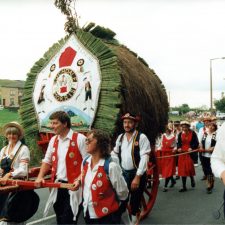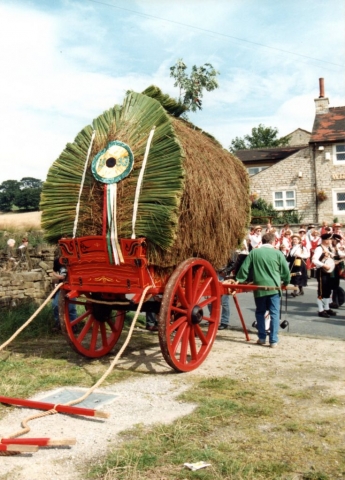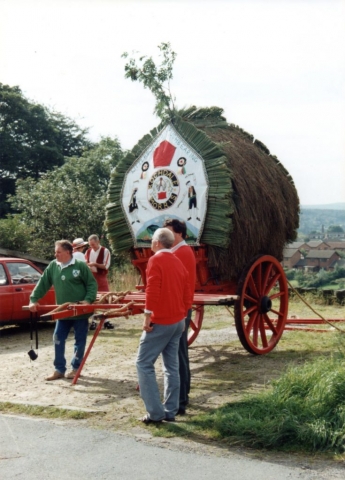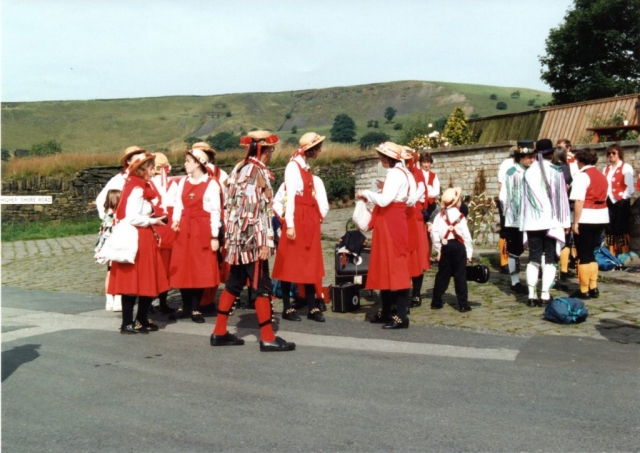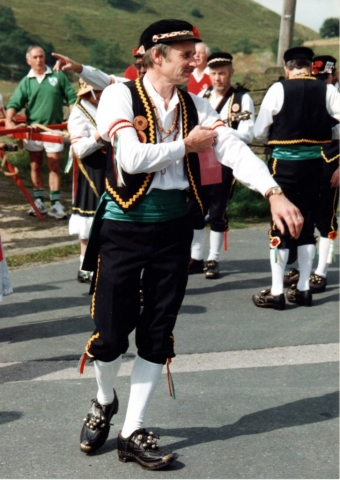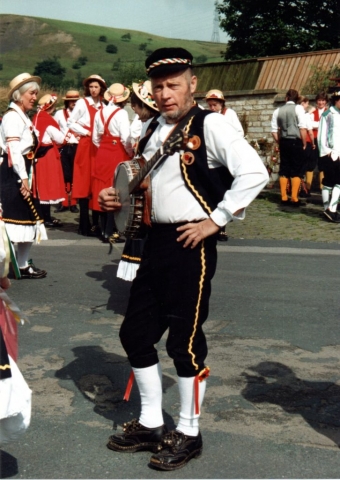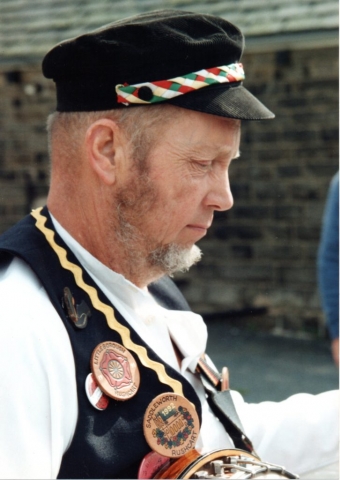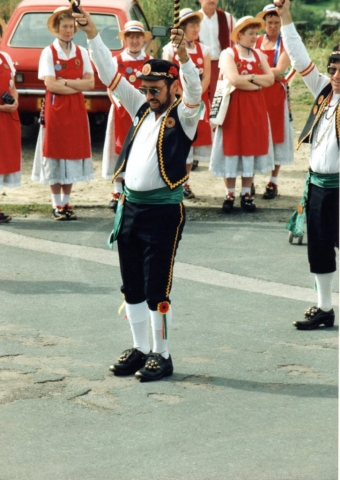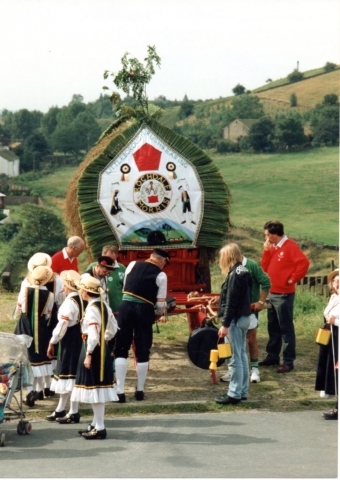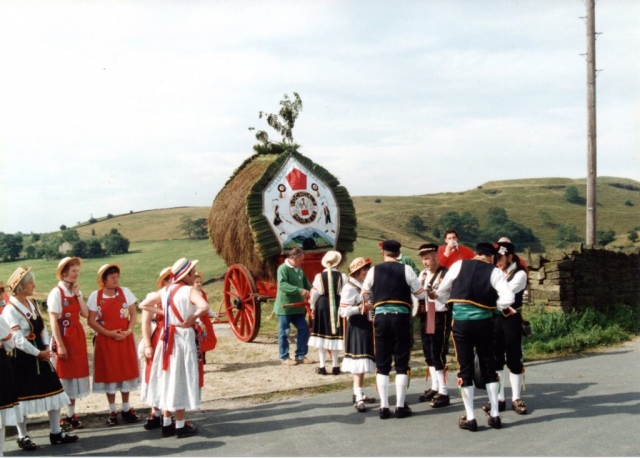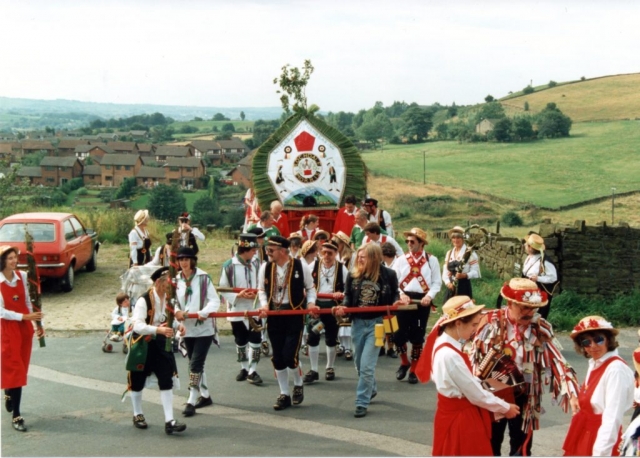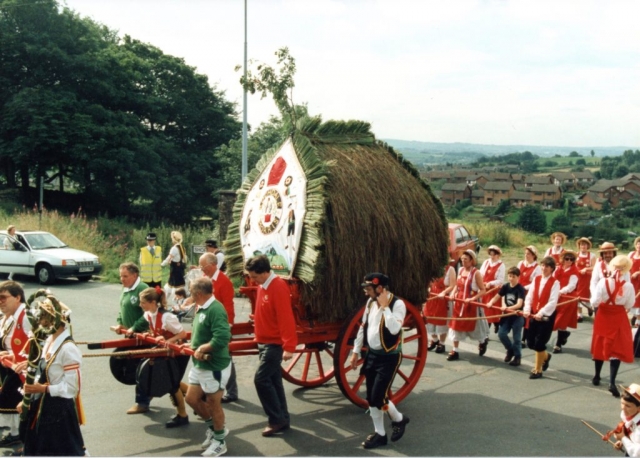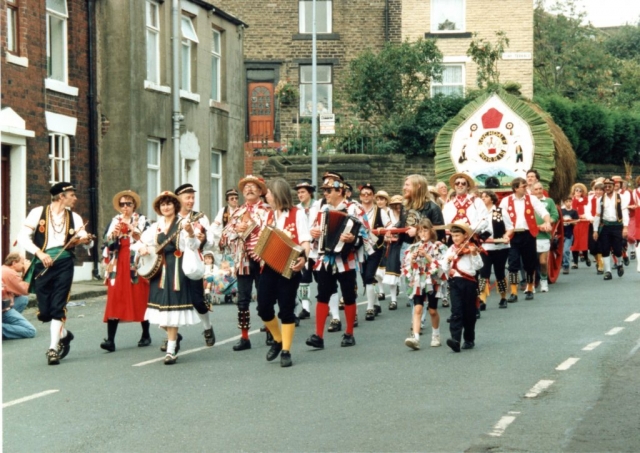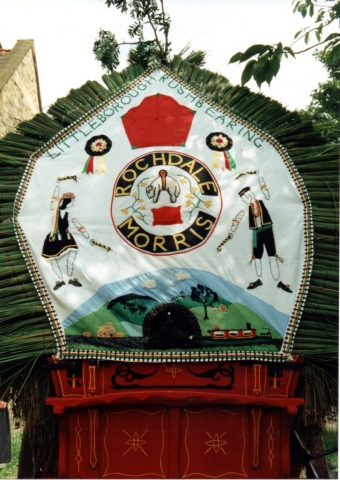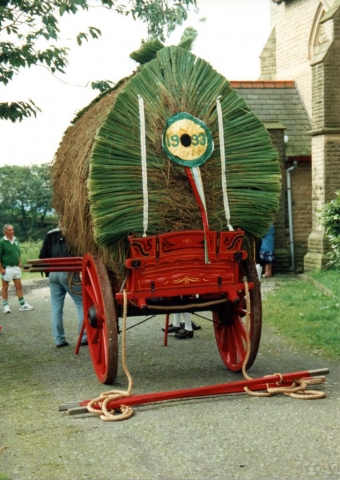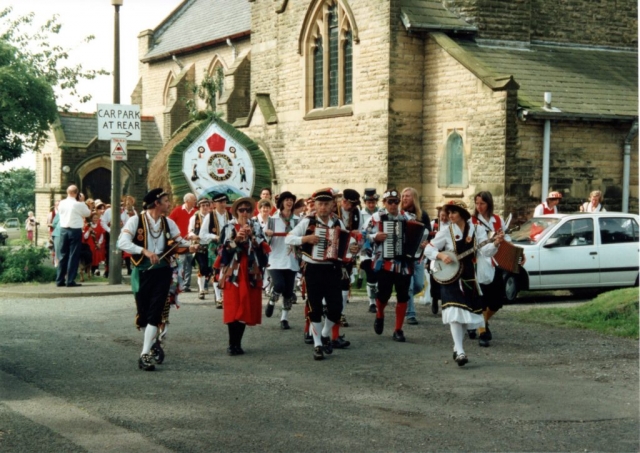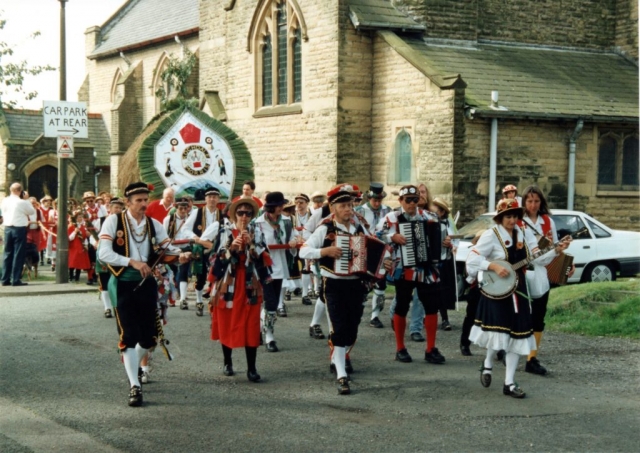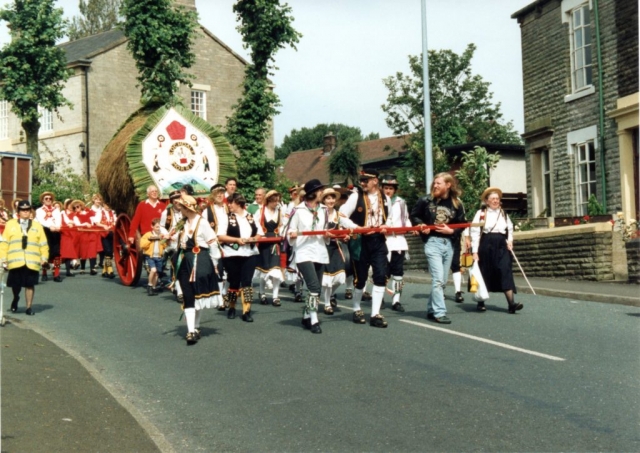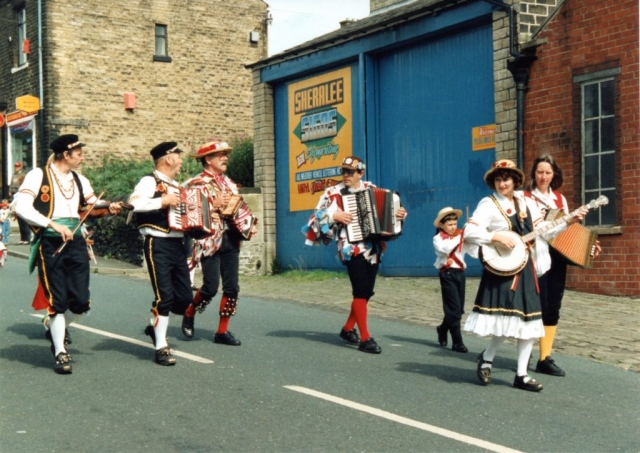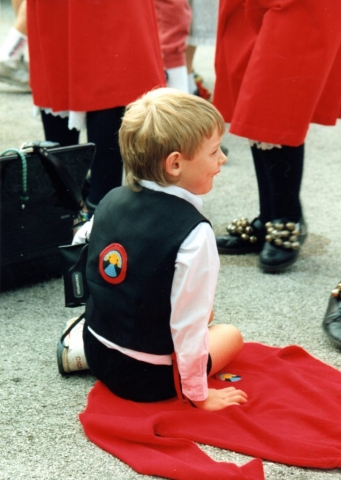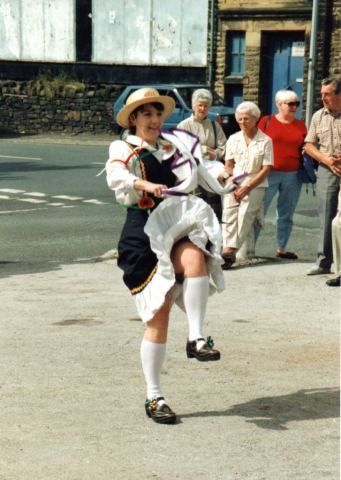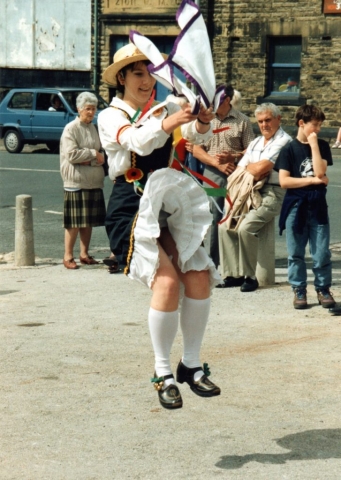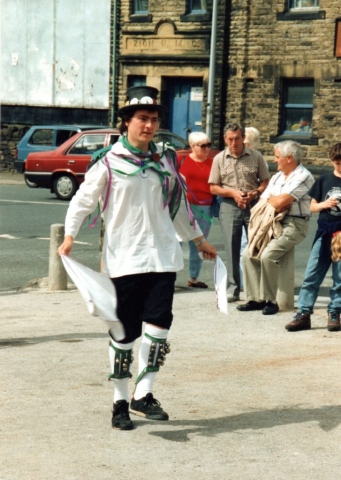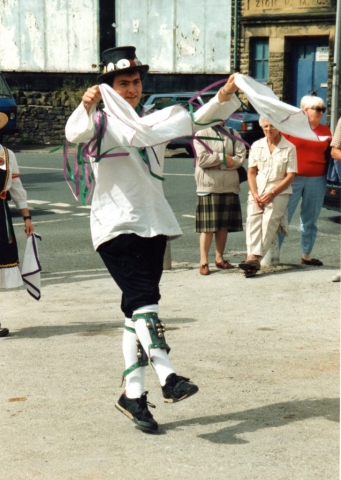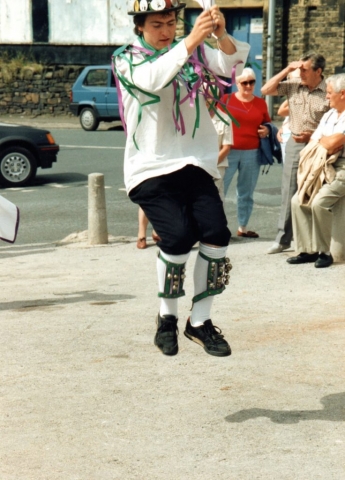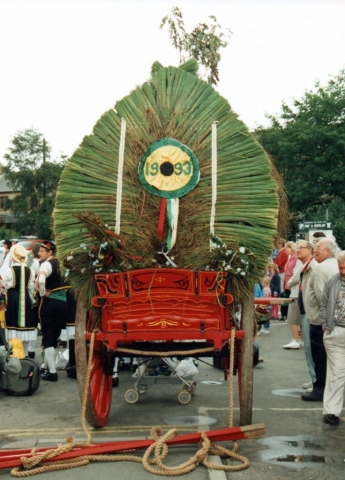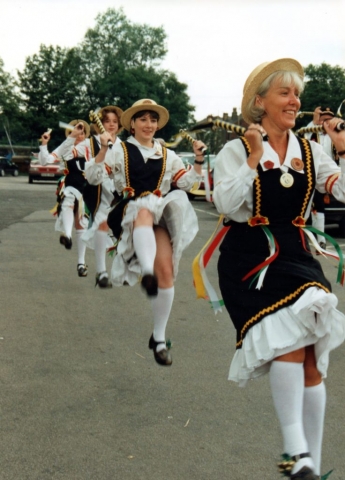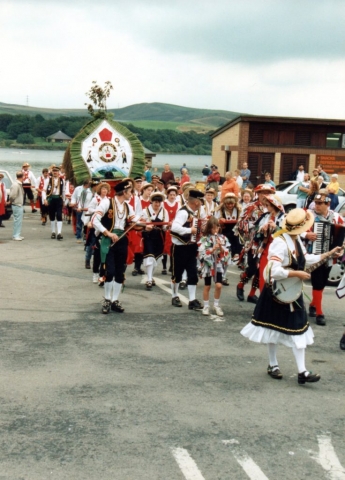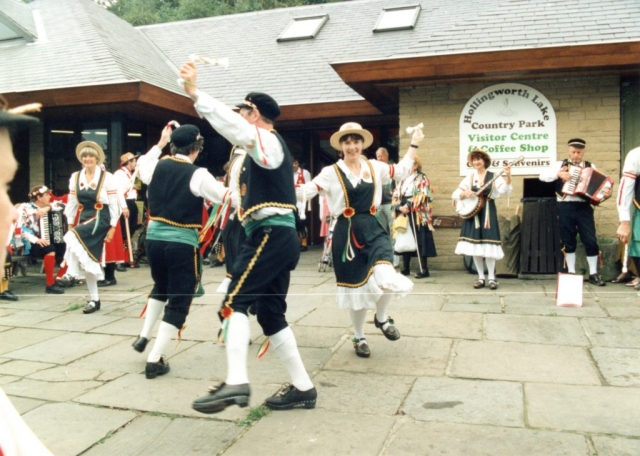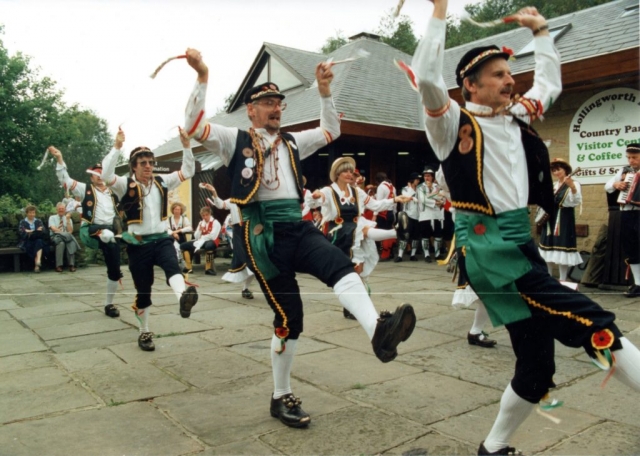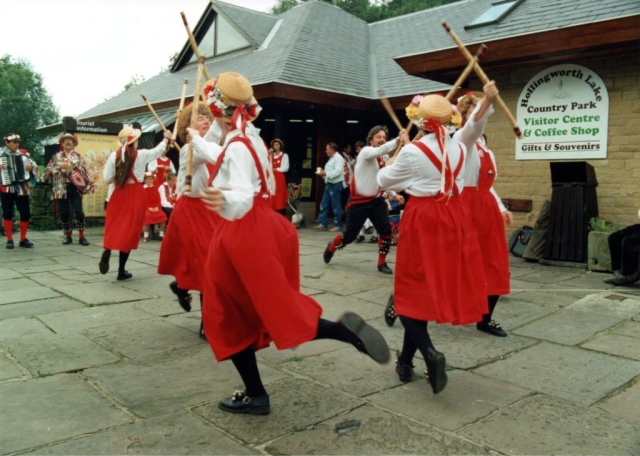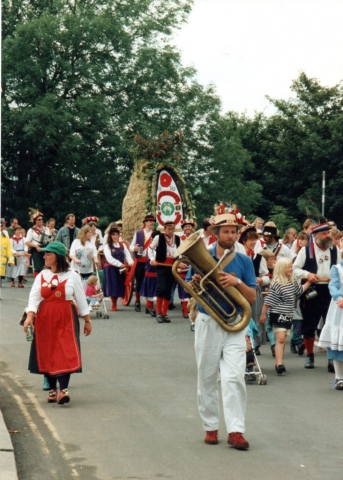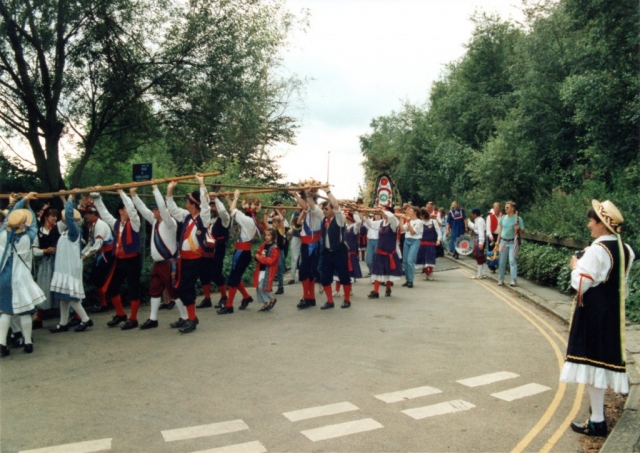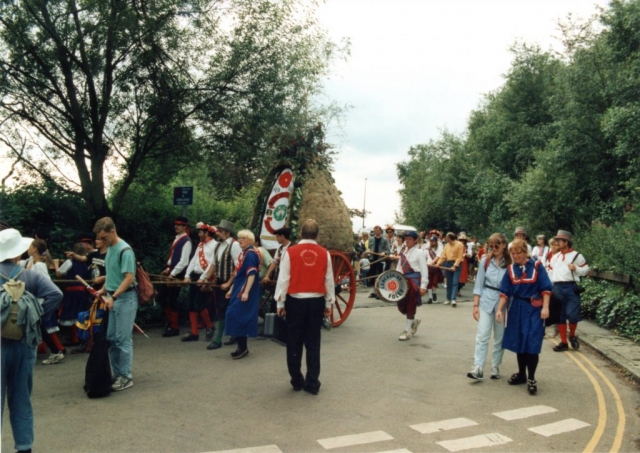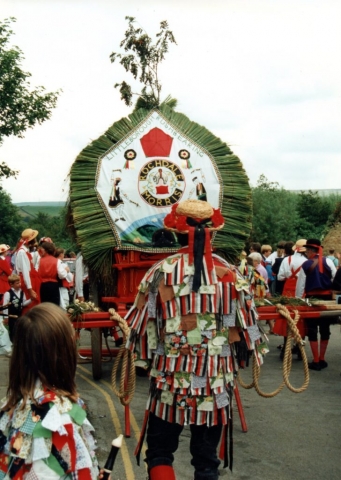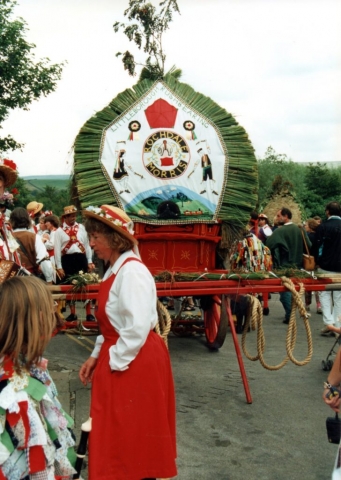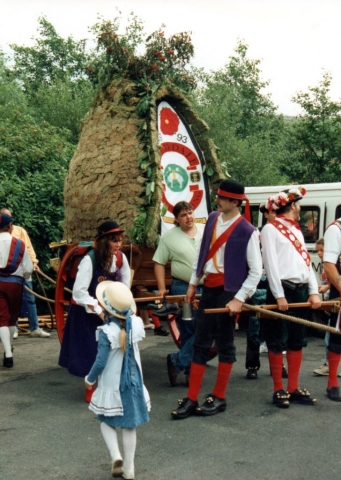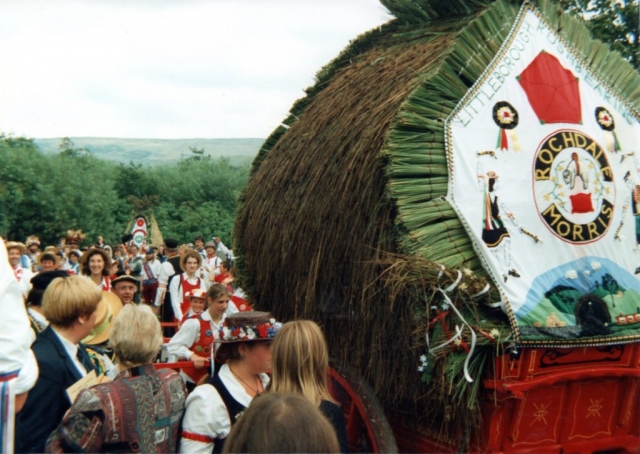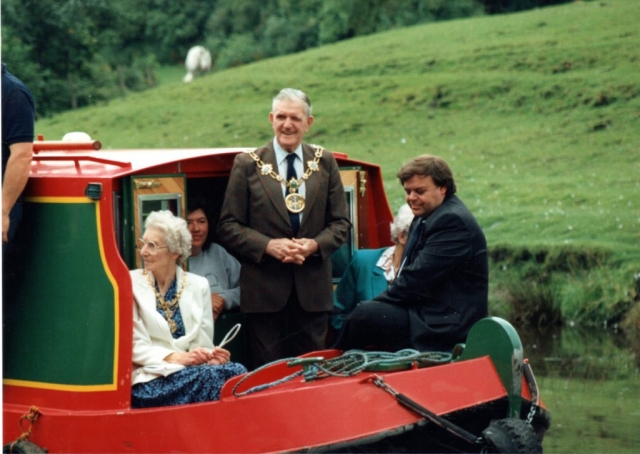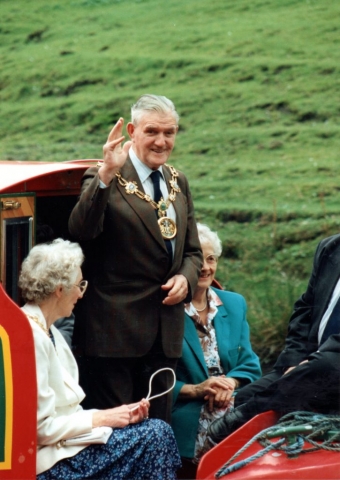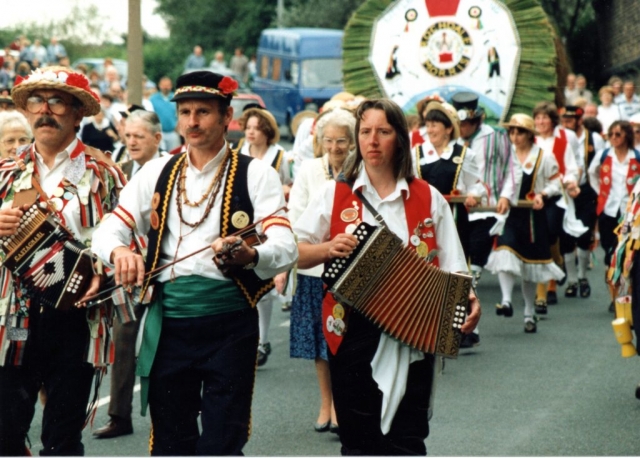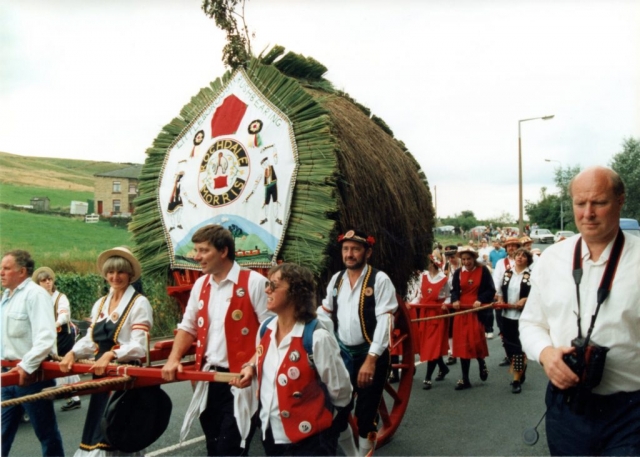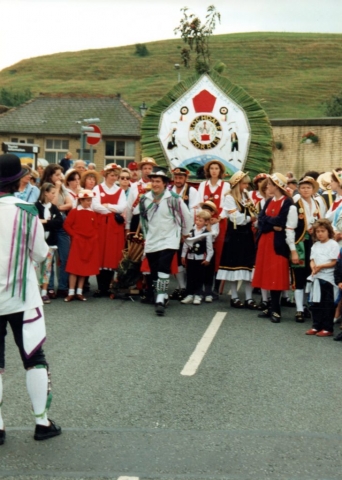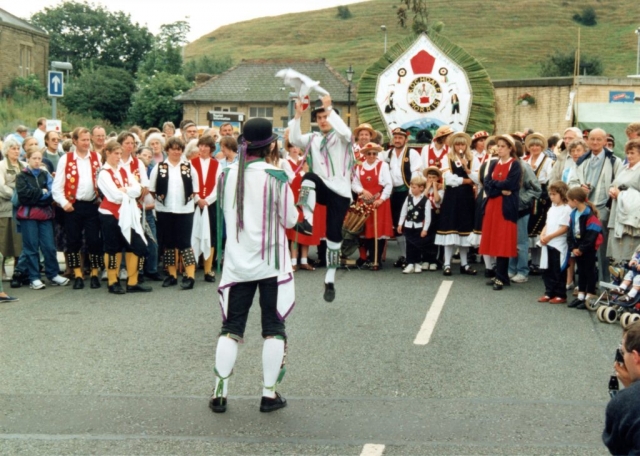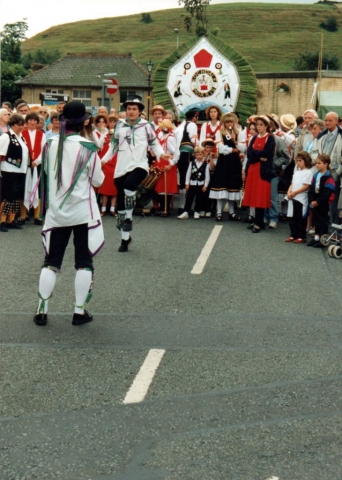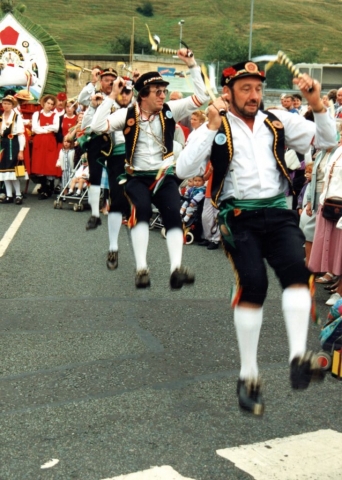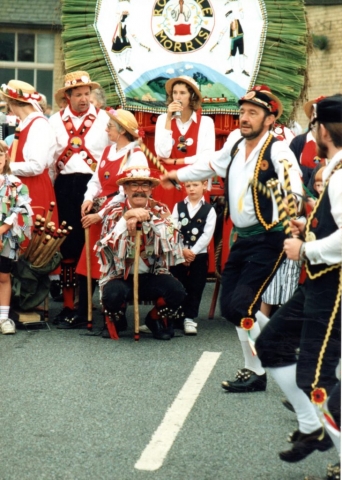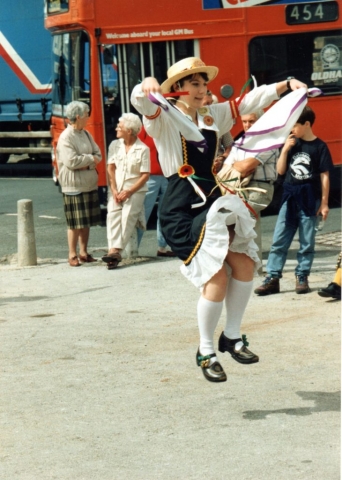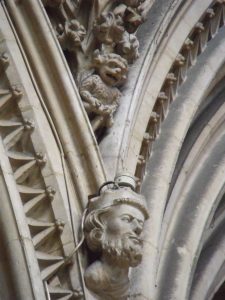
Blackstone Edge on the horizon
From “In Olden Days” by Rev. G. R. Oakley, M.A., B.D.,
The glorious beauty of an early autumn morning, the sweet scent of the wide-stretching moorland, the invigorating breeze from the east sweeping over the hills, the occasional calls of the birds or the flutter of their wings, all combined (as they still combine) to make life seem more than usually joyous on a certain day in the year 1247, when a company of men might have been seen assembled on that part of Blackstone Edge which we now call “Robin Hood’s Bed.”

Robin Hood’s Bed
Stalwart fine fellows were they, clothed in well-fitting tunics of the fashion of the day, and of a colour so like that of grass that one could readily understand how easily the owners might lie in ambush in some parts of the country—in forest lands, for instance—were they so disposed.
There were at least a hundred men, and every man was armed, most of them with that splendid English weapon, the long-bow, which in later days gained Crecy and Poictiers and Agincourt, and the use of which Bishop Latimer (in 1549) described as “a godly art, a wholesome kind of exercise, and much commended in physic.” Many of them, however, carried quarter-staves—tough poles of wood some seven feet long, shod at each end with iron, and which, when grasped in the hands of athletic men and twirled with practised skill, became terrible weapons, one blow from which usually terminated a combat.
These archers and others—all clad in the costume of Lincoln green already described—made a striking picture as they stood in a semi-circle listening intently to the words of the man who stood upon one of those great stones which still mark “Robin Hood’s Bed.”
Read more »





